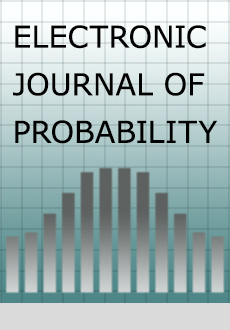Abstract
We study Swendsen–Wang dynamics for the critical $q$-state Potts model on the square lattice. For $q=2,3,4$, where the phase transition is continuous, the mixing time $t_{\mathrm{mix} }$ is expected to obey a universal power-law independent of the boundary conditions. On the other hand, for large $q$, where the phase transition is discontinuous, the authors recently showed that $t_{\mathrm{mix} }$ is highly sensitive to boundary conditions: $t_{\mathrm{mix} } \geq \exp (cn)$ on an $n\times n$ box with periodic boundary, yet under free or monochromatic boundary conditions, $t_{\mathrm{mix} } \leq \exp (n^{o(1)})$.
In this work we classify this effect under boundary conditions that interpolate between these two (torus vs. free/monochromatic). Specifically, if one of the $q$ colors is red, mixed boundary conditions such as red-free-red-free on the 4 sides of the box induce $t_{\mathrm{mix} } \geq \exp (cn)$, yet Dobrushin boundary conditions such as red-red-free-free, as well as red-periodic-red-periodic, induce sub-exponential mixing.
Citation
Reza Gheissari. Eyal Lubetzky. "The effect of boundary conditions on mixing of 2D Potts models at discontinuous phase transitions." Electron. J. Probab. 23 1 - 30, 2018. https://doi.org/10.1214/18-EJP180
Information





